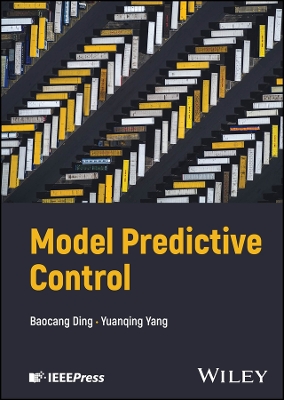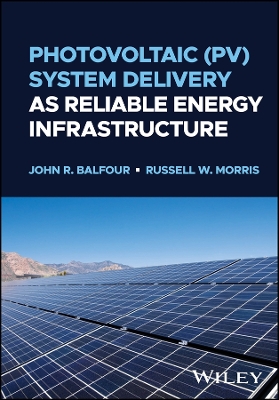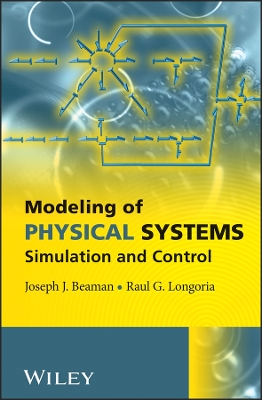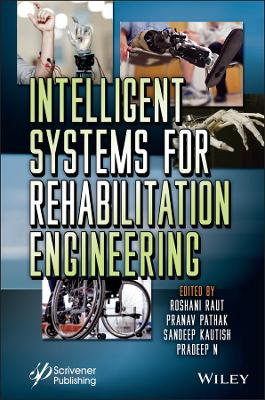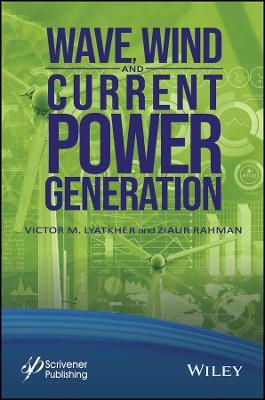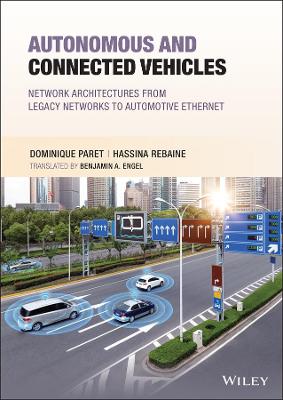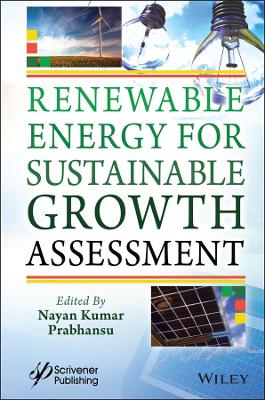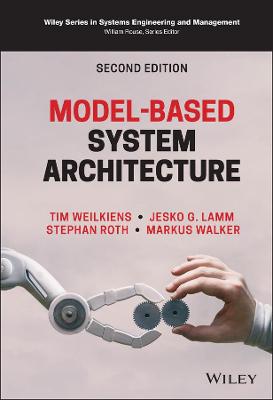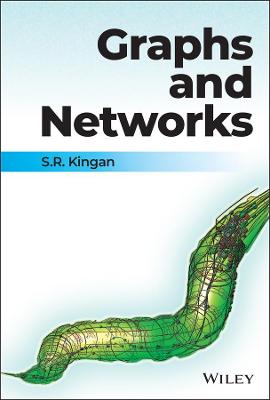Energy Conservation in Residential, Commercial, and Industrial Facilities
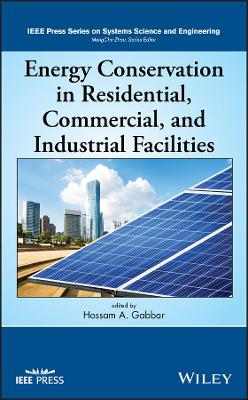 -15%
portes grátis
-15%
portes grátis
Energy Conservation in Residential, Commercial, and Industrial Facilities
Gabbar, Hossam A.
John Wiley & Sons Inc
09/2018
352
Dura
Inglês
9781119422068
15 a 20 dias
678
AUTHORS' BIOGRAPHY XVII
LIST OF CONTRIBUTORS XXI
ACKNOWLEDGMENTS XXIII
PART I ENERGY INFRASTRUCTURE SYSTEMS
1 ENERGY IN INFRASTRUCTURES 3
Hossam A. Gabbar
1.1 Infrastructure Systems / 3
1.1.1 Infrastructure Classi?cations / 4
1.1.2 Infrastructure Systems / 4
1.2 Energy Systems in Residential Facilities / 5
1.3 Energy Systems in Commercial Facilities / 8
1.4 Energy Systems in Industrial Facilities / 8
1.5 Energy Systems in Transportation Infrastructures / 8
1.6 Energy Production and Supply Infrastructures / 11
1.7 Conclusion / 12
References / 13
2 BUILDING ENERGY MANAGEMENT SYSTEMS (BEMS) / 15
Khairy Sayed and Hossam A. Gabbar
2.1 Introduction / 15
2.2 BEMS (BMS) Control Systems Overview / 22
2.3 Bene?ts of Building Energy Management Systems / 24
2.4 BMS Architectures / 26
2.4.1 Plain Support for Energy Awareness / 26
2.4.2 Integration of Actuators and Environmental Sensors / 27
2.5 Energy Systems Monitoring / 29
2.5.1 Indirect Monitoring / 29
2.5.2 Direct Monitoring / 30
2.5.3 Hybrid Monitoring / 30
2.5.4 Comparison of Different Energy Monitoring Systems / 31
2.5.5 Devices for Energy Sensing / 31
2.5.6 Integrated Control of Active and Passive Heating, Cooling, Lighting, Shading, and Ventilation Systems / 32
2.5.7 Electricity Network Architectures / 33
2.6 Energy Savings from Building Energy Management Systems / 35
2.6.1 Energy Savings Opportunities / 36
2.6.2 The Intelligent Building Approach / 43
2.6.3 Energy Monitoring, Pro?ling, and Modeling / 44
2.7 Smart Homes / 45
2.7.1 Economic Feasibility and Likelihood of Widespread Adoption / 47
2.7.2 Smart Home Energy Management / 47
2.7.3 Assets and Controls / 48
2.8 Energy Saving in Smart Home / 51
2.8.1 Heating and Cooling / 51
2.8.2 Lights / 52
2.8.3 Automatic Timers / 52
2.8.4 Motion Sensors / 52
2.8.5 Light Dimmer / 52
2.8.6 Energy-Ef?cient Light Bulbs / 52
2.9 Managing Energy Smart Homes According to Energy Prices / 53
2.10 Smart Energy Monitoring Systems to Help in Controlling Electricity Bill / 56
2.11 Advancing Building Energy Management System to Enable Smart Grid Interoperation / 57
2.11.1 Smart Grid and Customer Interoperation / 58
2.11.2 Customer Interoperation and Energy Service / 59
2.12 Communication for BEMS / 60
2.12.1 Building Automation System / 61
2.12.2 Busses and Protocols / 62
2.13 Data Management for Building / 68
2.13.1 Main Functions of the Building Management System / 68
2.13.2 Planning of a Building Management System / 69
2.14 Power Management / 70
2.14.1 Levels of the Power Management System / 72
2.14.2 Switching Status Acquisition and Measurements in the Power Distribution / 72
2.14.3 Switchgear and Communications / 73
2.14.4 Power Management Module / 79
Abbreviations / 79
References / 80
3 SIMULATION-BASED ENERGY PERFORMANCE OF LOW-RISE BUILDINGS 85
Farayi Musharavati, Shaligram Pokharel, and Hossam A. Gabbar
3.1 Introduction / 85
3.2 Simulation of Building Energy Performance / 87
3.3 Case Study I: Building Energy Simulation in Residential Buildings / 89
3.3.1 HEED / 89
3.3.2 Case Study Description / 89
3.4 Case Study II: Building Energy Simulation in Commercial Buildings (Shopping Mall) / 96
3.4.1 eQUEST / 97
3.4.2 Case Study Description / 97
3.4.3 Mall Occupancy / 98
3.4.4 Mall Lighting / 98
3.4.5 Mall Ventilation / 98
3.4.6 Mall Climate Control / 99
References / 106
PART II ENERGY SYSTEMS
4 FAST CHARGING SYSTEMS 111
Hossam A. Gabbar and Ahmed M. Othman
4.1 Introduction / 111
4.2 Fast Charging versus Other Charging Approaches / 112
4.3 Fast Charging: Technologies and Trends / 114
4.3.1 Flywheel Technology / 115
4.3.2 Advantages of Flywheel / 115
4.3.3 Scalable Flywheel Technology / 116
4.4 Flywheel-Based Fast Charging System 116
4.4.1 Fast Charging Stations: Design Criteria / 116
4.4.2 Fast Charging Stations: Covering Factor / 116
4.4.3 Mobility Behavior / 117
4.4.4 Mobility Integrated Study / 117
4.5 FFCS Design / 118
4.5.1 FFCS: Multilevel Circuit Design / 119
4.5.2 Control of Flywheel by Hysteresis Controller / 119
4.6 Proposed System Design / 120
4.7 ROI and Bene?ts of FFCS / 121
4.8 Conclusions 122 Further Readings / 122
5 MICROINVERTER SYSTEMS FOR ENERGY CONSERVATION IN INFRASTRUCTURES 125
Hossam A. Gabbar, Jason Runge, and Khairy Sayed
5.1 Introduction / 125
5.1.1 Global PV Trends / 126
5.1.2 Solar PV in Canada / 126
5.1.3 Problem Statement / 127
5.2 Background / 128
5.2.1 History of the Inverter / 128
5.2.2 Inverter Classi?cation Based on Power Rating / 129
5.2.3 Inverter Market History / 129
5.2.4 Inverter Overview / 131
5.2.5 Grid Synchronization / 133
5.2.6 Key Performance Indicators / 134
5.3 Inverter Design / 136
5.3.1 Circuit Block Overview / 136
5.3.2 Solar Panel Used / 137
5.3.3 DC-DC Converter Subcircuit Design / 138
5.3.4 DC Link /140
5.3.5 Inverter Topology Subcircuit Design / 142
5.3.6 SPWM Design / 142
5.3.7 Filter Subcircuit Design / 143
5.3.8 Maximum Power Point Tracking Control Loop Design / 147
5.3.9 Grid Synchronization - PLL Control Design / 149
5.3.10 300 W PSIM Circuit Design / 150
5.3.11 600 W Inverter Circuit Design / 151
5.3.12 Dual-Mode Inverter Design / 153
5.4 Simulation Results / 155
5.4.1 300 W Microinverter / 156
5.4.2 600 W Inverter / 157
5.4.3 Dual-Mode Inverter / 158
5.4.4 KPI Analysis / 163
5.5 Microinverter System Evaluation / 164
5.5.1 Key Performance Indicators / 164
5.5.2 Per Unit Key Performance Indication / 166
5.5.3 Resiliency Evaluation Methodology / 169
5.6 Case 0: Microinverter System / 170
5.7 Resiliency Controller Design / 171
5.7.1 Requirements / 172
5.7.2 Circuit Design / 172
5.8 Resiliency Case Study Design / 173
5.8.1 Need / 173
5.8.2 Assumptions / 174
5.8.3 Case 1: Two 300 W Inverters Paired Inside Single Inverter Unit / 174
5.8.4 Case 2: Extra 300 W Microinverter in Parallel to Microinverters / 179
5.8.5 Case 3: Backup 600 W Inverter Inside Paired Microinverters / 185
5.8.6 Case 4: Adjustable (300-600 W) Inverters Paired / 189
5.9 Results / 195
5.9.1 Summary of KPU / 195
5.9.2 Calculating and Mapping of PU-KPI / 197
5.10 Conclusion / 197
References / 198
PART III ENERGY CONSERVATION STRATEGIES
6 INTEGRATED PLANNING AND OPERATIONAL CONTROL OF RESILIENT MEG FOR OPTIMAL DERS SIZING AND ENHANCED DYNAMIC PERFORMANCE 205
Hossam A. Gabbar, Ahmed M. Othman, and Aboelsood Zidan
6.1 Introduction / 205
6.2 MEG Design with ESCL Demonstrations / 207
6.2.1 The Planning Stage / 208
6.2.2 The Operational Stage / 211
6.3 Enhanced Dynamic PID Control / 213
6.4 Backtracking Search Algorithm / 214
6.5 Case Study and Simulation Results / 217
6.6 Conclusions / 223
References / 223
7 PERSPECTIVES OF DEMAND-SIDE MANAGEMENT UNDER SMART GRID CONCEPT 225
Onur Elma and Hossam A. Gabbar
7.1 Introduction / 225
7.2 Description of the Demand-Side Management / 227
7.2.1 The Bene?ts of the DSM / 230
7.3 Demand Response / 231
7.3.1 Demand Response Programs / 232
7.3.2 Examples of Demand Response Applications / 232
7.3.3 Information about Demand Response Standards / 235
7.4 Smart Metering / 236
7.5 Dynamic Pricing / 239
7.6 Residential Demand Control: Home Energy Management / 239
7.7 Conclusion / 243
References / 245
8 RESILIENT BATTERY MANAGEMENT FOR BUILDINGS 249
Hossam A. Gabbar and Ahmed M. Othman
8.1 Introduction / 249
8.2 Explorer of Smart Building Energy Automation (SBEA) / 250
8.3 SBEA Scopes and Speci?cations / 251
8.4 SBEA Structure / 253
8.4.1 Connection Structure / 253
8.4.2 Technical Speci?cations / 253
8.5 SBEA Control Strategy / 253
8.6 Communications and Data Analytics / 255
8.7 Technical Speci?cations / 256
8.8 Smart Building Energy Automation: SBEA / 258
8.8.1 Module Description / 258
8.8.2 Standards / 260
8.9 Saving with Solar and Battery Integration / 260
8.9.1 Residential Demands / 260
8.9.2 Commercial Demands / 261
8.10 SBEA Main Objectives / 261
8.11 SBEA Functions / 261
8.12 Current Control Module: SBEA / 262
8.13 Protection PCM Modules / 262
8.14 Management Control / 263
8.15 Battery Management and Control Variables 264 Further Readings / 266
9 CONTROL ARCHITECTURE OF RESILIENT INTERCONNECTED MICROGRIDS (RIMGS) FOR RAILWAY INFRASTRUCTURES 267
Hossam A. Gabbar, Ahmed M. Othman, and Kartikey Singh
9.1 Introduction / 267
9.2 Problem Statement / 269
9.3 ESCL MG Prototype / 271
9.4 Microgrid Supervisory Controller / 271
9.5 Control Strategy / 274
9.6 Scenarios with Simulations and Results / 275
9.7 Cost and Bene?ts / 279
9.8 Conclusions / 284
References / 284
10 NOVEL LIFETIME EXTENSION TECHNOLOGY FOR CYBER-PHYSICAL SYSTEMS USING SDN AND NFV 287
Jun Wu and Shibo Luo
10.1 Introduction / 287
10.2 Background and Preliminaries / 289
10.2.1 Topology Control and Sleep-Mode Techniques / 289
10.2.2 Game Theory / 289
10.3 Proposed Mechanism / 289
10.3.1 Assumptions / 289
10.3.2 Methodology for NLES / 291
10.3.3 The Proposed Framework 292
10.3.4 Work?ow at Run-Time of the Proposed Mechanism / 294
10.3.5 Messages Exchange Protocol between the Controller and Sensors / 295
10.4 Game Theoretic Topology Decision Approach / 296
10.4.1 Problem Formulation / 296
10.4.2 Existence of NE / 297
10.4.3 Game Procedure / 298
10.5 Evaluation and Analysis / 299
10.5.1 Algorithms Evaluation Setup / 299
10.5.2 Algorithms Evaluation Results / 300
10.5.3 Analysis of the Advantages for Traf?c Volume Using SDN and NFV in CPS / 301
10.6 Conclusions and Future Work 302 Acknowledgment / 303
References / 303
11 ENERGY AUDIT IN INFRASTRUCTURES 305
Shaligram Pokharel, Farayi Musharavati, and Hossam A. Gabbar
11.1 Introduction / 305
11.2 Types of Energy Audits / 307
11.3 Building Details for Energy Audits / 307
11.4 Basics for Lighting Audits / 308
11.5 Types of Lamps / 308
11.6 Luminaires / 309
11.7 Room Index / 311
11.8 Evaluating the Number of Lamps Required for an Activity / 311
11.9 Economics of Audit in Lighting / 312
Acknowledgment / 314
Index / 315
AUTHORS' BIOGRAPHY XVII
LIST OF CONTRIBUTORS XXI
ACKNOWLEDGMENTS XXIII
PART I ENERGY INFRASTRUCTURE SYSTEMS
1 ENERGY IN INFRASTRUCTURES 3
Hossam A. Gabbar
1.1 Infrastructure Systems / 3
1.1.1 Infrastructure Classi?cations / 4
1.1.2 Infrastructure Systems / 4
1.2 Energy Systems in Residential Facilities / 5
1.3 Energy Systems in Commercial Facilities / 8
1.4 Energy Systems in Industrial Facilities / 8
1.5 Energy Systems in Transportation Infrastructures / 8
1.6 Energy Production and Supply Infrastructures / 11
1.7 Conclusion / 12
References / 13
2 BUILDING ENERGY MANAGEMENT SYSTEMS (BEMS) / 15
Khairy Sayed and Hossam A. Gabbar
2.1 Introduction / 15
2.2 BEMS (BMS) Control Systems Overview / 22
2.3 Bene?ts of Building Energy Management Systems / 24
2.4 BMS Architectures / 26
2.4.1 Plain Support for Energy Awareness / 26
2.4.2 Integration of Actuators and Environmental Sensors / 27
2.5 Energy Systems Monitoring / 29
2.5.1 Indirect Monitoring / 29
2.5.2 Direct Monitoring / 30
2.5.3 Hybrid Monitoring / 30
2.5.4 Comparison of Different Energy Monitoring Systems / 31
2.5.5 Devices for Energy Sensing / 31
2.5.6 Integrated Control of Active and Passive Heating, Cooling, Lighting, Shading, and Ventilation Systems / 32
2.5.7 Electricity Network Architectures / 33
2.6 Energy Savings from Building Energy Management Systems / 35
2.6.1 Energy Savings Opportunities / 36
2.6.2 The Intelligent Building Approach / 43
2.6.3 Energy Monitoring, Pro?ling, and Modeling / 44
2.7 Smart Homes / 45
2.7.1 Economic Feasibility and Likelihood of Widespread Adoption / 47
2.7.2 Smart Home Energy Management / 47
2.7.3 Assets and Controls / 48
2.8 Energy Saving in Smart Home / 51
2.8.1 Heating and Cooling / 51
2.8.2 Lights / 52
2.8.3 Automatic Timers / 52
2.8.4 Motion Sensors / 52
2.8.5 Light Dimmer / 52
2.8.6 Energy-Ef?cient Light Bulbs / 52
2.9 Managing Energy Smart Homes According to Energy Prices / 53
2.10 Smart Energy Monitoring Systems to Help in Controlling Electricity Bill / 56
2.11 Advancing Building Energy Management System to Enable Smart Grid Interoperation / 57
2.11.1 Smart Grid and Customer Interoperation / 58
2.11.2 Customer Interoperation and Energy Service / 59
2.12 Communication for BEMS / 60
2.12.1 Building Automation System / 61
2.12.2 Busses and Protocols / 62
2.13 Data Management for Building / 68
2.13.1 Main Functions of the Building Management System / 68
2.13.2 Planning of a Building Management System / 69
2.14 Power Management / 70
2.14.1 Levels of the Power Management System / 72
2.14.2 Switching Status Acquisition and Measurements in the Power Distribution / 72
2.14.3 Switchgear and Communications / 73
2.14.4 Power Management Module / 79
Abbreviations / 79
References / 80
3 SIMULATION-BASED ENERGY PERFORMANCE OF LOW-RISE BUILDINGS 85
Farayi Musharavati, Shaligram Pokharel, and Hossam A. Gabbar
3.1 Introduction / 85
3.2 Simulation of Building Energy Performance / 87
3.3 Case Study I: Building Energy Simulation in Residential Buildings / 89
3.3.1 HEED / 89
3.3.2 Case Study Description / 89
3.4 Case Study II: Building Energy Simulation in Commercial Buildings (Shopping Mall) / 96
3.4.1 eQUEST / 97
3.4.2 Case Study Description / 97
3.4.3 Mall Occupancy / 98
3.4.4 Mall Lighting / 98
3.4.5 Mall Ventilation / 98
3.4.6 Mall Climate Control / 99
References / 106
PART II ENERGY SYSTEMS
4 FAST CHARGING SYSTEMS 111
Hossam A. Gabbar and Ahmed M. Othman
4.1 Introduction / 111
4.2 Fast Charging versus Other Charging Approaches / 112
4.3 Fast Charging: Technologies and Trends / 114
4.3.1 Flywheel Technology / 115
4.3.2 Advantages of Flywheel / 115
4.3.3 Scalable Flywheel Technology / 116
4.4 Flywheel-Based Fast Charging System 116
4.4.1 Fast Charging Stations: Design Criteria / 116
4.4.2 Fast Charging Stations: Covering Factor / 116
4.4.3 Mobility Behavior / 117
4.4.4 Mobility Integrated Study / 117
4.5 FFCS Design / 118
4.5.1 FFCS: Multilevel Circuit Design / 119
4.5.2 Control of Flywheel by Hysteresis Controller / 119
4.6 Proposed System Design / 120
4.7 ROI and Bene?ts of FFCS / 121
4.8 Conclusions 122 Further Readings / 122
5 MICROINVERTER SYSTEMS FOR ENERGY CONSERVATION IN INFRASTRUCTURES 125
Hossam A. Gabbar, Jason Runge, and Khairy Sayed
5.1 Introduction / 125
5.1.1 Global PV Trends / 126
5.1.2 Solar PV in Canada / 126
5.1.3 Problem Statement / 127
5.2 Background / 128
5.2.1 History of the Inverter / 128
5.2.2 Inverter Classi?cation Based on Power Rating / 129
5.2.3 Inverter Market History / 129
5.2.4 Inverter Overview / 131
5.2.5 Grid Synchronization / 133
5.2.6 Key Performance Indicators / 134
5.3 Inverter Design / 136
5.3.1 Circuit Block Overview / 136
5.3.2 Solar Panel Used / 137
5.3.3 DC-DC Converter Subcircuit Design / 138
5.3.4 DC Link /140
5.3.5 Inverter Topology Subcircuit Design / 142
5.3.6 SPWM Design / 142
5.3.7 Filter Subcircuit Design / 143
5.3.8 Maximum Power Point Tracking Control Loop Design / 147
5.3.9 Grid Synchronization - PLL Control Design / 149
5.3.10 300 W PSIM Circuit Design / 150
5.3.11 600 W Inverter Circuit Design / 151
5.3.12 Dual-Mode Inverter Design / 153
5.4 Simulation Results / 155
5.4.1 300 W Microinverter / 156
5.4.2 600 W Inverter / 157
5.4.3 Dual-Mode Inverter / 158
5.4.4 KPI Analysis / 163
5.5 Microinverter System Evaluation / 164
5.5.1 Key Performance Indicators / 164
5.5.2 Per Unit Key Performance Indication / 166
5.5.3 Resiliency Evaluation Methodology / 169
5.6 Case 0: Microinverter System / 170
5.7 Resiliency Controller Design / 171
5.7.1 Requirements / 172
5.7.2 Circuit Design / 172
5.8 Resiliency Case Study Design / 173
5.8.1 Need / 173
5.8.2 Assumptions / 174
5.8.3 Case 1: Two 300 W Inverters Paired Inside Single Inverter Unit / 174
5.8.4 Case 2: Extra 300 W Microinverter in Parallel to Microinverters / 179
5.8.5 Case 3: Backup 600 W Inverter Inside Paired Microinverters / 185
5.8.6 Case 4: Adjustable (300-600 W) Inverters Paired / 189
5.9 Results / 195
5.9.1 Summary of KPU / 195
5.9.2 Calculating and Mapping of PU-KPI / 197
5.10 Conclusion / 197
References / 198
PART III ENERGY CONSERVATION STRATEGIES
6 INTEGRATED PLANNING AND OPERATIONAL CONTROL OF RESILIENT MEG FOR OPTIMAL DERS SIZING AND ENHANCED DYNAMIC PERFORMANCE 205
Hossam A. Gabbar, Ahmed M. Othman, and Aboelsood Zidan
6.1 Introduction / 205
6.2 MEG Design with ESCL Demonstrations / 207
6.2.1 The Planning Stage / 208
6.2.2 The Operational Stage / 211
6.3 Enhanced Dynamic PID Control / 213
6.4 Backtracking Search Algorithm / 214
6.5 Case Study and Simulation Results / 217
6.6 Conclusions / 223
References / 223
7 PERSPECTIVES OF DEMAND-SIDE MANAGEMENT UNDER SMART GRID CONCEPT 225
Onur Elma and Hossam A. Gabbar
7.1 Introduction / 225
7.2 Description of the Demand-Side Management / 227
7.2.1 The Bene?ts of the DSM / 230
7.3 Demand Response / 231
7.3.1 Demand Response Programs / 232
7.3.2 Examples of Demand Response Applications / 232
7.3.3 Information about Demand Response Standards / 235
7.4 Smart Metering / 236
7.5 Dynamic Pricing / 239
7.6 Residential Demand Control: Home Energy Management / 239
7.7 Conclusion / 243
References / 245
8 RESILIENT BATTERY MANAGEMENT FOR BUILDINGS 249
Hossam A. Gabbar and Ahmed M. Othman
8.1 Introduction / 249
8.2 Explorer of Smart Building Energy Automation (SBEA) / 250
8.3 SBEA Scopes and Speci?cations / 251
8.4 SBEA Structure / 253
8.4.1 Connection Structure / 253
8.4.2 Technical Speci?cations / 253
8.5 SBEA Control Strategy / 253
8.6 Communications and Data Analytics / 255
8.7 Technical Speci?cations / 256
8.8 Smart Building Energy Automation: SBEA / 258
8.8.1 Module Description / 258
8.8.2 Standards / 260
8.9 Saving with Solar and Battery Integration / 260
8.9.1 Residential Demands / 260
8.9.2 Commercial Demands / 261
8.10 SBEA Main Objectives / 261
8.11 SBEA Functions / 261
8.12 Current Control Module: SBEA / 262
8.13 Protection PCM Modules / 262
8.14 Management Control / 263
8.15 Battery Management and Control Variables 264 Further Readings / 266
9 CONTROL ARCHITECTURE OF RESILIENT INTERCONNECTED MICROGRIDS (RIMGS) FOR RAILWAY INFRASTRUCTURES 267
Hossam A. Gabbar, Ahmed M. Othman, and Kartikey Singh
9.1 Introduction / 267
9.2 Problem Statement / 269
9.3 ESCL MG Prototype / 271
9.4 Microgrid Supervisory Controller / 271
9.5 Control Strategy / 274
9.6 Scenarios with Simulations and Results / 275
9.7 Cost and Bene?ts / 279
9.8 Conclusions / 284
References / 284
10 NOVEL LIFETIME EXTENSION TECHNOLOGY FOR CYBER-PHYSICAL SYSTEMS USING SDN AND NFV 287
Jun Wu and Shibo Luo
10.1 Introduction / 287
10.2 Background and Preliminaries / 289
10.2.1 Topology Control and Sleep-Mode Techniques / 289
10.2.2 Game Theory / 289
10.3 Proposed Mechanism / 289
10.3.1 Assumptions / 289
10.3.2 Methodology for NLES / 291
10.3.3 The Proposed Framework 292
10.3.4 Work?ow at Run-Time of the Proposed Mechanism / 294
10.3.5 Messages Exchange Protocol between the Controller and Sensors / 295
10.4 Game Theoretic Topology Decision Approach / 296
10.4.1 Problem Formulation / 296
10.4.2 Existence of NE / 297
10.4.3 Game Procedure / 298
10.5 Evaluation and Analysis / 299
10.5.1 Algorithms Evaluation Setup / 299
10.5.2 Algorithms Evaluation Results / 300
10.5.3 Analysis of the Advantages for Traf?c Volume Using SDN and NFV in CPS / 301
10.6 Conclusions and Future Work 302 Acknowledgment / 303
References / 303
11 ENERGY AUDIT IN INFRASTRUCTURES 305
Shaligram Pokharel, Farayi Musharavati, and Hossam A. Gabbar
11.1 Introduction / 305
11.2 Types of Energy Audits / 307
11.3 Building Details for Energy Audits / 307
11.4 Basics for Lighting Audits / 308
11.5 Types of Lamps / 308
11.6 Luminaires / 309
11.7 Room Index / 311
11.8 Evaluating the Number of Lamps Required for an Activity / 311
11.9 Economics of Audit in Lighting / 312
Acknowledgment / 314
Index / 315

